The kind of fishing tools and materials you use depends quite heavily on several factors. One of these factors is the type of fish you want to catch. Fishing for trout requires a different type of fishing line considering its weight and the stealth that it requires. Because of this, we have compiled 10 fishing lines that will help you decide on the best fishing line for trout. We also provide you with guides on choosing the appropriate fishing line, steps on how to set up your fishing line, and we answer some of the frequently asked questions to further help you in buying your fishing line.
Top 10 Spinning Lines Overview
| Image | Name | Line Weight | Line Type | Rating (1-5) | Buy |
|---|---|---|---|---|---|
 | 1. Seaguar STS Trout/Steelhead Fluorocarbon Leader Fishing Line | 4-lb test | Fluorocarbon | 4.7 | |
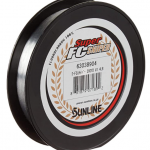 | 2. Sunline Super FC Sniper Fluorocarbon Fishing Line | 5-lb test | Fluorocarbon | 4.7 | |
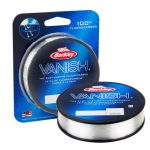 | 3. Berkley Vanish Fluorocarbon Fishing Line | 4-lb test | Fluorocarbon | 4.6 | |
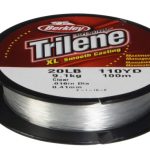 | 4. Berkley Trilene XL Monofilament Fishing Line | 2-lb test | Monofilament | 4.6 | |
 | 5. Trout Magnet Phantom 100% Fluorocarbon | Fluorocarbon | 4.6 | ||
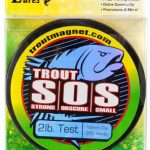 | 6. Trout Magnet S.O.S. Fishing Line | 2-lb, 4-lb, 6-lb test | Copolymer | 4.6 | |
 | 7. KastKing FluoroKote Fishing Line | 4-lb test | Fluorocarbon | 4.5 | |
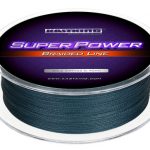 | 8. KastKing SuperPower Braided Fishing Line | 6-lb test | Braided | 4.5 | |
 | 9. Stren Fluorocast Fluorocarbon Fishing Line | 4-lb test | Fluorocarbon | 4.5 | |
 | 10. RUNCL PowerFluoro Fishing Line | 5-lb test | Copolymer | 4.4 |
Factors for Choosing the Best Fishing Line for Trout
Every angler has their share of experience with fishing line breaking. This can be frustrating especially when you are in the middle of catching a heavy and strong trout. That is why understanding the qualities of the best fishing line for trout is an important skill for an angler as there are several different types of fishing lines already available in the market today. Deciding what line is the best fit for your fishing needs will make your fishing activity a successful one.
1. Line Strength
You must get a fishing line with the right durability to successfully reel in a fish.
To do that, you should also understand how the strength of each fishing line works. In a much simpler explanation, the line strength is measured by how much weight the fishing line can lift before it will eventually break.
A useful tool for consulting what fishing line to use is the fishing line strength chart.
Such a chart will tell you how many pounds of force a fishing line can take before it will break depending on the weight of the fish.
2. Types of Species to Fish
Know what type of fish you will be aiming to catch on your next fishing trip.
A heavy fishing line is necessary for larger fishers while getting a fishing line with a small pound test if you are going after a smaller species of fish.
You may also check a fishing line weight guide found online. It will give you recommendations based on the type of fishing, species, and weight, such as getting an eight to 14-pound line for fishing a trout.
3. Materials in Fishing Line
For beginners, you should first familiarize yourself with the materials used in the best fishing lines for trout in the market, and how these materials will affect your fishing. There are three basic types of fishing lines: monofilament, fluorocarbon, and braided.
Monofilament
For most beginner anglers, selecting the monofilament line is an ideal choice and it is the cheapest fishing line if you want to try trout fishing on a budget.
This fishing line is a single continuous untwisted strand made from nylon. What makes the monofilament fishing line popular to many beginners in trout fishing is that it is extremely flexible and easy to use.
However, one problem in using the monofilament fishing line is its abrasion resistance as some anglers experienced in trout fishing would point out.
Many advanced anglers also do not choose a monofilament line for its stretch. Having too much line out or if you had a bad angle in the fish, it could be difficult for you to have a good hook set.
Even though it is affordable, watch out as there are cheap brands of monofilament fishing lines that do not give you the best performance compared to expensive ones. It is suggested to try out several brands to know which one to trust.
Fluorocarbon
The fluorocarbon fishing line has a good abrasion resistance compared to the monofilament fishing line. It also has almost no stretch and is almost invisible because the said type has an almost identical refractive index. This makes the fluorocarbon fishing line an increasingly popular choice for anglers.
The materials used in the fluorocarbon fishing line are like monofilament but from different chemical compounds. This makes the fluorocarbon thinner but of the same strength compared to monofilament. It is also less stretchy and more durable, perfect for trout fishing.
The fluorocarbon fishing line does not absorb water. It will also not deteriorate when exposed to sunlight, battery acid, DEET, or gasoline.
Braided
And if you are trout fishing in dark water or deep sea, you would probably prefer a braided fishing line. This type of fishing line is formed by fibers of polyethylene woven together.
The braided line is considered to be the best fishing line for trout. It is the top choice for most anglers for its strength, having not a chance of a break. It also has no stretch.
However, it is highly visible if you compare it to the much thinner fluorocarbon line. It is suggested not to use it if you are in clear water to prevent drawbacks in trout fishing. But when you are fishing in muddy water, go with the braided line.
Those who prefer saltwater fishing often use braided fishing lines. They also use it as a backup for mono fishing lines.
4. Fishing Location
Before heading to the local tackle shop in your area to buy a fishing line, determine first the type of water or environment where you will be fishing. You will be needing a heavier fishing line in a fishing spot where there is abrasive covering compared to open water.
5. The Buoyancy of the Fishing Line
The buoyancy of your selected fishing line will vary depending on the type of lures or baits you will be used in fishing.
For those using a monofilament fishing line, it has a higher level of buoyancy, which is the best to use if you want to have a bait that requires staying on top of the water. Meanwhile, you may want to try a fluorocarbon fishing line if you intend your bait to fall in the water deeper.
6. The Flexibility of the Fishing Line
For the best fishing experience, buy a fishing line that has great flexibility. The more flexible your fishing line is, the easier it is to manipulate and the farther you will be able to cast.
7. Fishing Line’s Stretch
Another factor to remember in choosing the best fishing line for trout is its stretch potential. You will be having a hard time tying a knot if you bought a much elastic fishing line.
8. Weather Condition
Before you plan your next fishing trip, you also need to identify the types of fishing lines to use depending on the specific type of weather conditions.
How to Set up a Fishing Line for Trout
After you have learned about the various types of fishing lines available and what other aspects to look out for in choosing the best fishing line for trout fishing, you still have to practice how to properly set up a fishing line for trout if you want to try this fun-filled and thrilling recreational activity in your next weekend vacation.
Trout breeds both in fresh and saltwater, but you will mostly find it in rivers and lakes. It could grow up to massive sizes that is why you need to know the reliable and effective ways to set up a fishing line for trout. It takes time to rig a fishing line, but you just need to have patience and determination to master the skill. It also does not have to be complicated so take time to read this guide on how to prepare a trout rig and the easy step-by-step process on how to set up a fishing line for trout.
But first, you will be needing these gears and accessories:
Fishing Rod and Reel
A fishing rod and reel are imperative equipment for trout fishing. You can find a quality fishing rod and reel in stores and online markets for less than a hundred bucks.
Fishing Lines
You cannot have successful fishing without the best fishing line for trout fishing. Lines are often included when buying a rod and reel, but you can still look for a line fit for your specific needs.
Hook
When it comes to trout fishing, the right hook is as essential as the fishing line. A hook in between four and twelve is the recommended size for it.
Bobber
For amateur anglers, one option is to buy a bobber also known as afloat. A good bobber is one that is not too small, so you can easily tell if a trout has taken the bait.
Worms
Worms are a simple bait in trout fishing, but you can try out other available bait.
Sinker
You will also need to have a good sinker to keep your bait down in the water. Be mindful in selecting a sinker because it is too heavy, it will only drag your bobber underneath the water.
Steps in Setting Up a Fishing Line for Trout
1. Insert the fishing line into the tiny hole of the fishing hook while ensuring that you have wrapped its tip that you have passed through the mainline. Just to make sure that it does not loosen, you may wrap it at least nine times
2. Take the end of the fishing line and pass it through the hook once more. After this, you tug the main fishing line so that the twists will become tighter.
3. Cut any extra and dangling part of the fishing line with the use of scissors.
4. Place the bobber at the end of your fishing line, by coiling the line through the top and bottom hooks. Make sure that the fishing line runs through both the hooks to keep the bobber anchored in a steady spot.
There you have it! You are ready to set out in the water for a good fishing trip with these simple but effective ways of setting up the best fishing line for trout fishing.
Our Top 10 Picks for the Best Fishing Line for Trout
Because choosing the best fishing line for trout can be a bit overwhelming, we have listed our top 10 picks that you can choose from:
1. Seaguar STS Trout/Steelhead Fluorocarbon Leader Fishing Line
What is good about this fishing line is that it is made specifically for catching salmon, steelhead, and trout. Along with its strength comes an abrasion-resistant material and virtual invisibility in water. Its fast sinking line can help you reach your “strike-zone” a lot quicker, making your fishing even more efficient, not to mention its exceptional knot strength.
Pros
- Specifically made for trout fish
- Abrasion-resistant
- Fast sinking line
Cons
- There can be issues with its visibility in the water
2. Sunline Super FC Sniper Fluorocarbon Fishing Line
What’s remarkable about this fishing line is its triple-coating that provides a softer feel and more agile handling. Casting this fishing line is made easier by its low memory. You can expect this line to last long because its material prevents it from getting abrasions even after constant usage. It does not easily break off after tugging. This line is more appropriate for smaller catches than larger ones.
Pros
- Triple-coating line
- Easier casting
- Abrasion-resistant material
Cons
- There might be twists and tangling when casting
3. Berkley Vanish Fluorocarbon Fishing Line
This fishing line usually remains clear when submerged underwater. Made using quality materials, it has a remarkable chuck strength and can resist abrasion. You can also be assured that it will not break easily no matter your location of fishing. With this, you can also enjoy catching big fish from bass to trout.
Pros
- Line remains clear underwater
- Could catch a variety of fish
Cons
- Line break easily in some situations
4. Berkley Trilene XL Monofilament Fishing Line
With this fishing line, you can catch fish with smooth casting as this can resist twisting and breaking. No matter what your fishing technique is and no matter what bait you use, this fishing line assures your versatility. It also doesn’t stretch too much so it would be easier to tackle larger fish. The sensitivity of this fishing line comes along with its strength so you can be sure that this product lasts longer. All of this you can get at an affordable price.
Pros
- Quality strength for its price
- Does not stretch too much
- Manageable memory
Cons
- The line can get tangled sometimes
5. Trout Magnet Phantom 100% Fluorocarbon
The fluorocarbon material of this fishing line will help you catch fish because of its reduced line visibility. Its material also makes sure that every knot you try will remain strong. Its small package also allows for easy storage. If your goal is to catch trout, then this fishing line is for you because its quality materials ensure strength – something you think that you can get only from expensive fishing lines.
Pros
- Great fluorocarbon material
- Easy storage
- Reduced visibility in the water
Cons
- Can be extremely stiff
6. Trout Magnet S.O.S. Fishing Line
If your goal is light-line fishing like trout fishing, then this fishing line may be what you want to buy. Made out of copolymer, it is easy to cast and is soft while maintaining its strength and its abrasion-resistant characteristics. One drawback that this fishing line has, however, is that in very clear waters, the line might not be entirely invisible. Fishing for trout in murky or unclear water though would do the job.
Pros
- Fit for light fishing
- Easy to cast
Cons
- Not invisible in very clear waters
7. KastKing FluoroKote Fishing Line
What is exceptional about this fishing line is its fluorocarbon material which reduces the visibility of the line when it is immersed in water. It also has a faster sinking time and its materials make the line abrasion-resistant with remarkable strength. At a lower price, you can have a strong line that has more reel capacity and has increased depth. Because of its flexibility, you can fish using this line in almost all conditions without worrying about its durability.
Pros
- Minimal to no line breaks
- Very durable line
- Exceptional invisibility of line in the water
Cons
- There can be occasional backlashes
8. KastKing SuperPower Braided Fishing Line
With this fishing line, you don’t need to worry about where you will be fishing. You can fish in a stream or along the beach and you will find no abrasion in this fishing line. Aside from this versatility, the fishing line also has a strong knot strength. This can also help you fish effectively because of its high sensitivity. The strengths of this fishing line can range from 10 to 150 lbs. Also, you can select from among different colors. It could be blue, gray, or even multicolor.
Pros
- Line is smooth and strong braided
- Can be used for larger fish
- Very easy to spool
Cons
- The colors may fade over time
9. Stren Fluorocast Fluorocarbon Fishing Line
This fishing line boasts its knot and shock strength with its 100% fluorocarbon material which makes it virtually invisible in the water. Since it casts like nylon, you do not need to worry about its sensitivity, strength, and ease of casting. Because this is a high-density line, it can allow the lure to run deep, which makes it appropriate for trout fishing.
Pros
- 100% fluorocarbon material
- Nylon-like casting
- Remarkable sensitivity
Cons
- Might break because of sudden tugging
10. RUNCL PowerFluoro Fishing Line
This fishing line is a combination of fluorocarbon (as an outer coating) and copolymer (as core). This combination does not only give out amazing shock strength and abrasion-resistant quality, but it also delivers great impact strength, flexibility, and reduced memory. Its fluorocarbon material makes the line identical to water, making it appropriate for fishing bass and trout. It provides extra sensitivity so that you can feel even the slightest bit.
Pros
- Extra sensitivity
- Combined fluorocarbon and copolymer materials
- High-density construction
Cons
- Knots may slip sometimes
Frequently Asked Questions about the Best Fishing Line for Trout
Some of the frequently asked questions (FAQs) here are for the general public and amateur anglers.
What is the purpose of a fishing line?
A fishing line connects the bait to the rod and reel. It is then thrown in the water to present the bait to the fish. Once a fish is hooked, a quality fishing line is important in reeling it in successfully.
In the fishing line, what does the pound test mean?
Pound test or line test is defined as the strength of a fishing line in terms of pounds. It is also described as the most weight a fishing line can hold before breaking.
What is the all-around type of fishing line for trout?
Many anglers who are trying out trout fishing choose fluorocarbon as their mainline for it is mostly invisible in water. They prefer this because trout are said to be line shy.
What is the best fishing line for trout in clear water?
Clearwater would let a trout see the fishing line easier, that is why using a fluorocarbon line is the best choice for you.
What is the best fishing line for trout in dirty water?
A monofilament fishing line is good when you’re trout fishing in dirty or stained waters. Mono has a wider variety of colors that you could match in the color of this particular water condition.
What is the best ice fishing line for trout?
Whenever you are ice fishing for trout, you must consider using the fluorocarbon line. This type of line is resistant to abrasion, which is important when you want to prevent your catch from escaping as a trout would try to fight you by dragging the fishing line along the edge of the hole cut in the ice.
A fluorocarbon line would also keep its flexibility and not become stiff when the temperature in the water drops below freezing.
What is the best fishing line in still fishing?
The monofilament line is the best fit when you are still fishing as it is not denser compared to fluorocarbon and it does keep your bait suspended, which is the key in still fishing.
Can fish see colors in a fishing line?
Yes, there are different colors in a fishing line and other colors are more visible underwater.
What is the best color for a fishing line?
When deciding what color of fishing line is available in the market to pick, you could consider choosing between yellow, red, green, or clear.
The yellow fishing line is great if you want to watch your line to detect fish bites. From above, the bright color of yellow is easy to see, however, it is also more visible to the fishes below. Consider using a yellow fishing line in stained waters.
A red fishing line is said to lose its color or turn black underwater, and it is easy to spot above the water, according to some anglers.
Green fishing line is also good at blending into the water, which many anglers prefer when they want to keep their fishing lines invisible. In very clear water, however, the green fishing line may also be more visible than a clear line.
Another option for anglers is a blue fishing line. It is comparatively invisible underwater, but easier to perceive above water.
What is the best bait for trout fishing?
For muddy water or heavily fished streams, natural baits are a good choice in trout fishing, as trout could easily detect these baits under these water conditions. You may try worms, waxworms, crickets, grasshoppers, or aquatic nymphs and larvae.
What are the main species of trout and where to find them?
There are three major species of trout that you find in your next trout fishing: Rainbow and Brown, which are both found in streams and rivers, and Brook trout, also referred to as speckled trout.
When is the best time of the year to catch trout?
The best fishing time when catching trout is generally during the warmer season or spring when they are actively feeding because of the rising temperature and abundance of food.
Do trout feed all day?
Species of trout bite at any time of the day but if you want to go out for fishing with a chance of higher yield, many anglers suggest fishing early in the morning or late afternoon. But you can always get out there and fish to discover what works for you and in your area.
Final Thoughts
Fishing is not just about choosing any material, it’s about choosing the one that fits your needs. Fishing for trout means carefully choosing which fishing line would work best – which has enough strength, durability, virtual invisibility, and sensitivity. All of this you put into consideration along with the budget that you have at hand. As you have read in our review, you do not need to spend that much to find what is the best fishing line for trout. We have provided you with affordable options, but at the same time have all the characteristics that you need in your specific fishing experience.

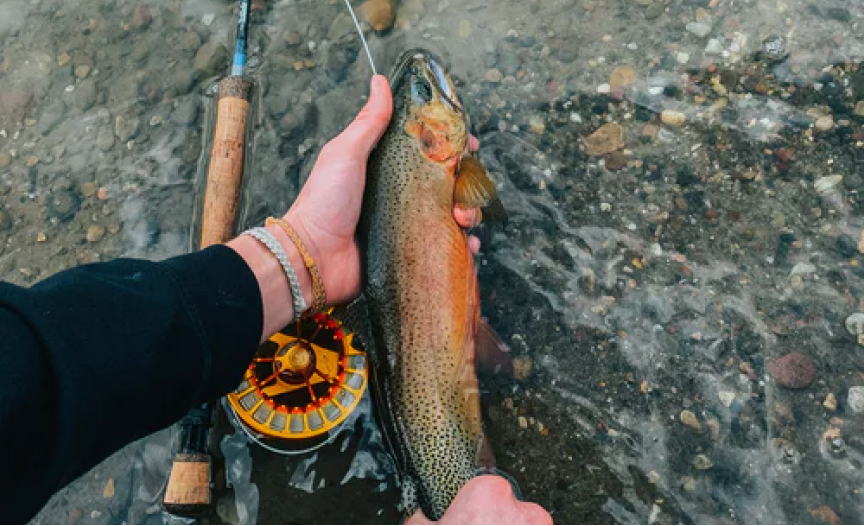
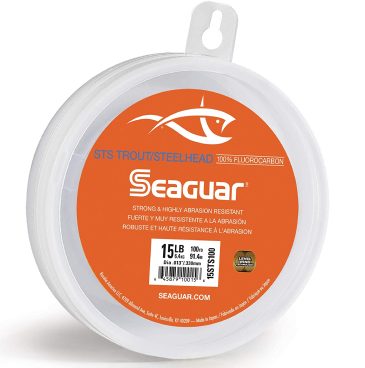
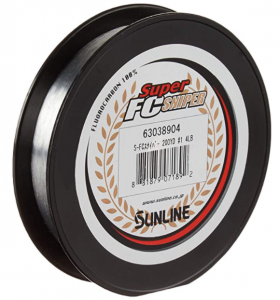
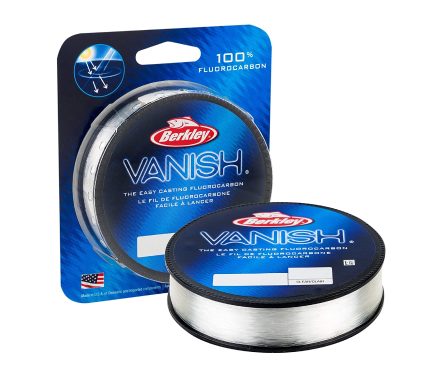
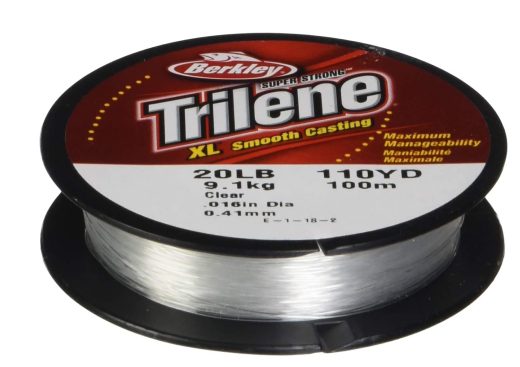
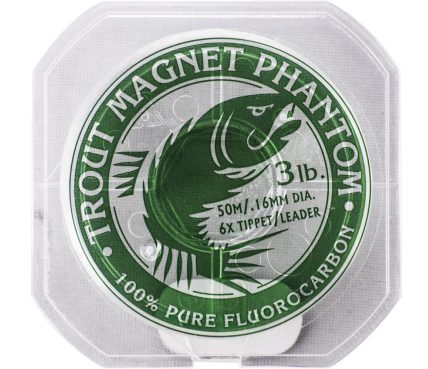
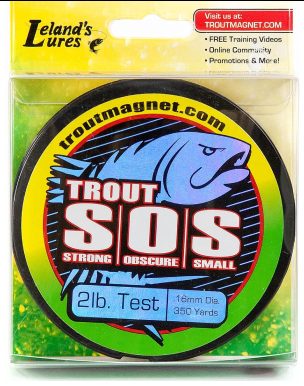

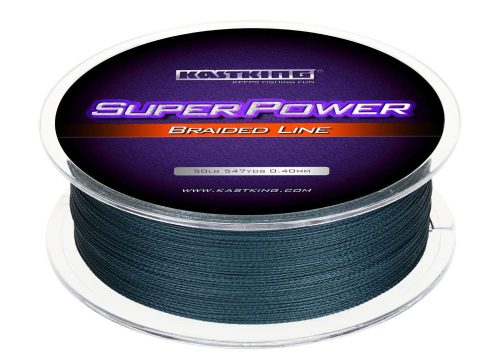


Way cool! Some very valid points! I appreciate you penning this post and
the rest of the site is very good.